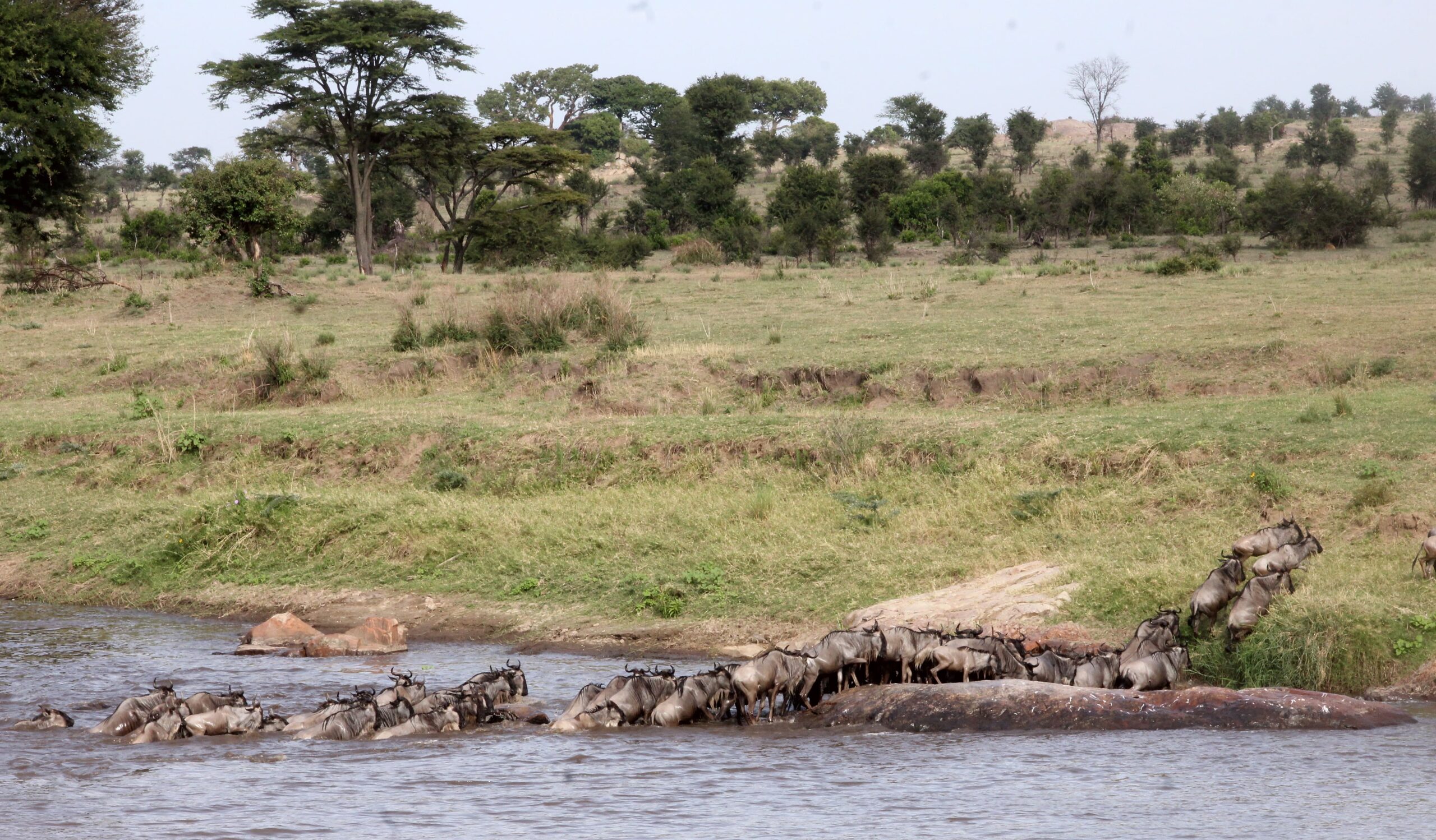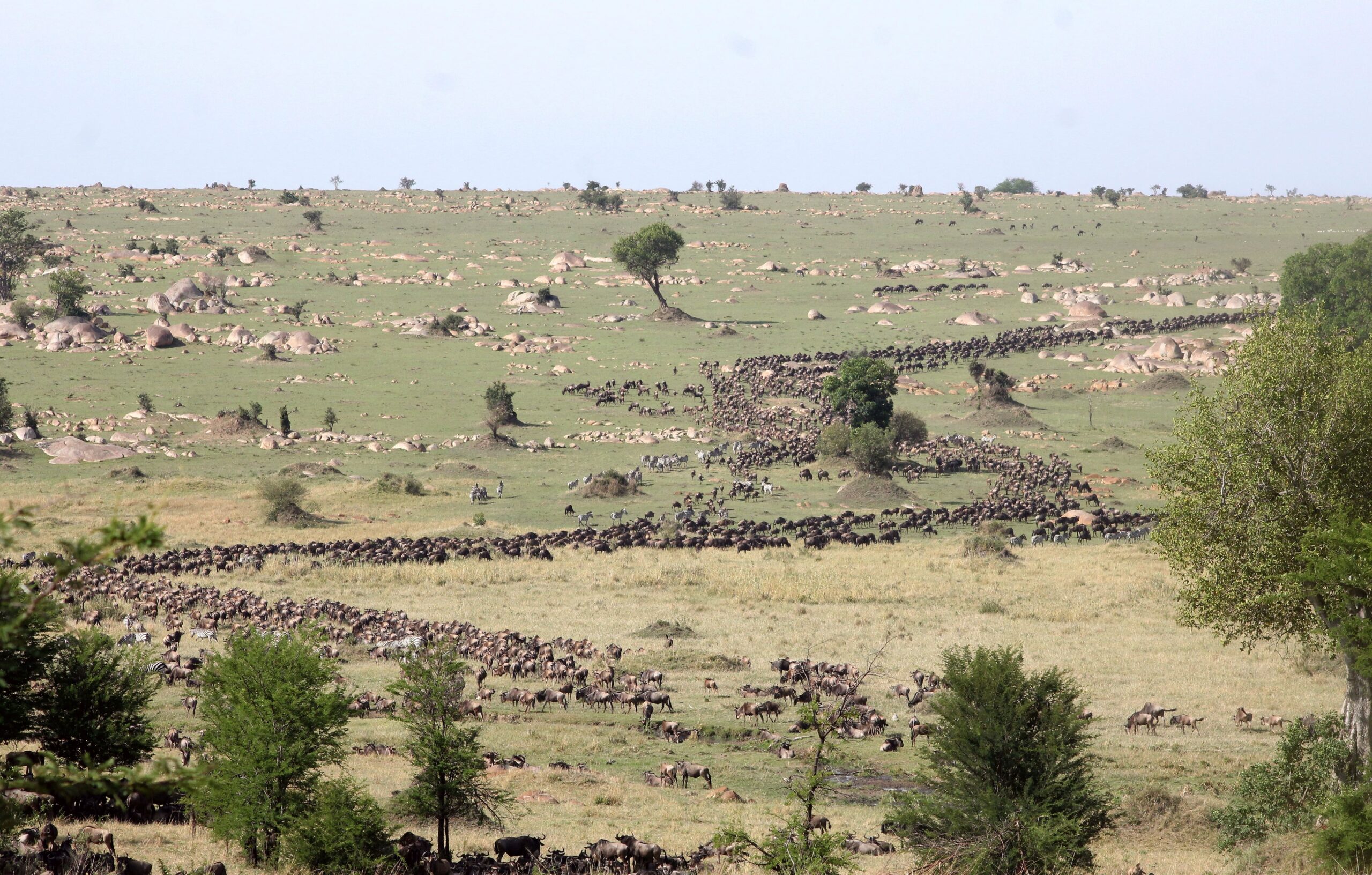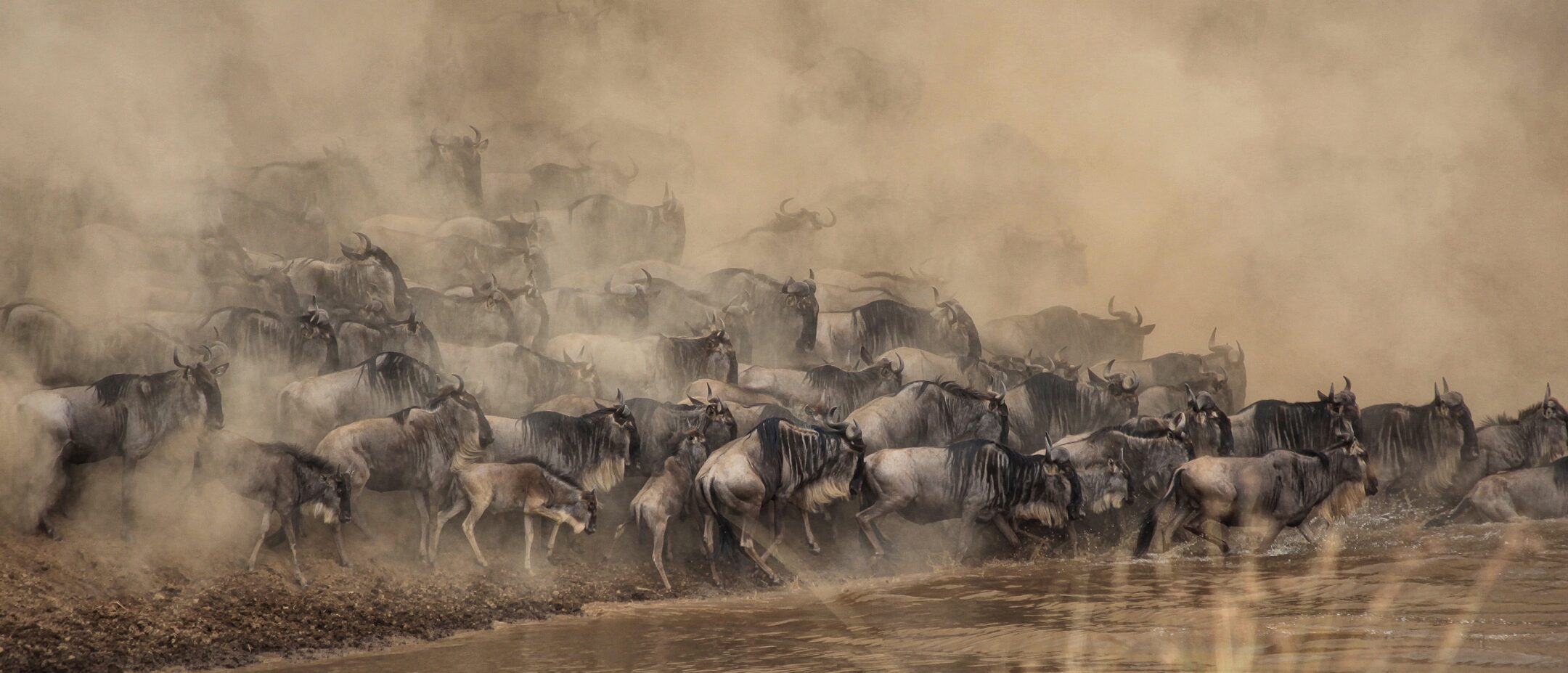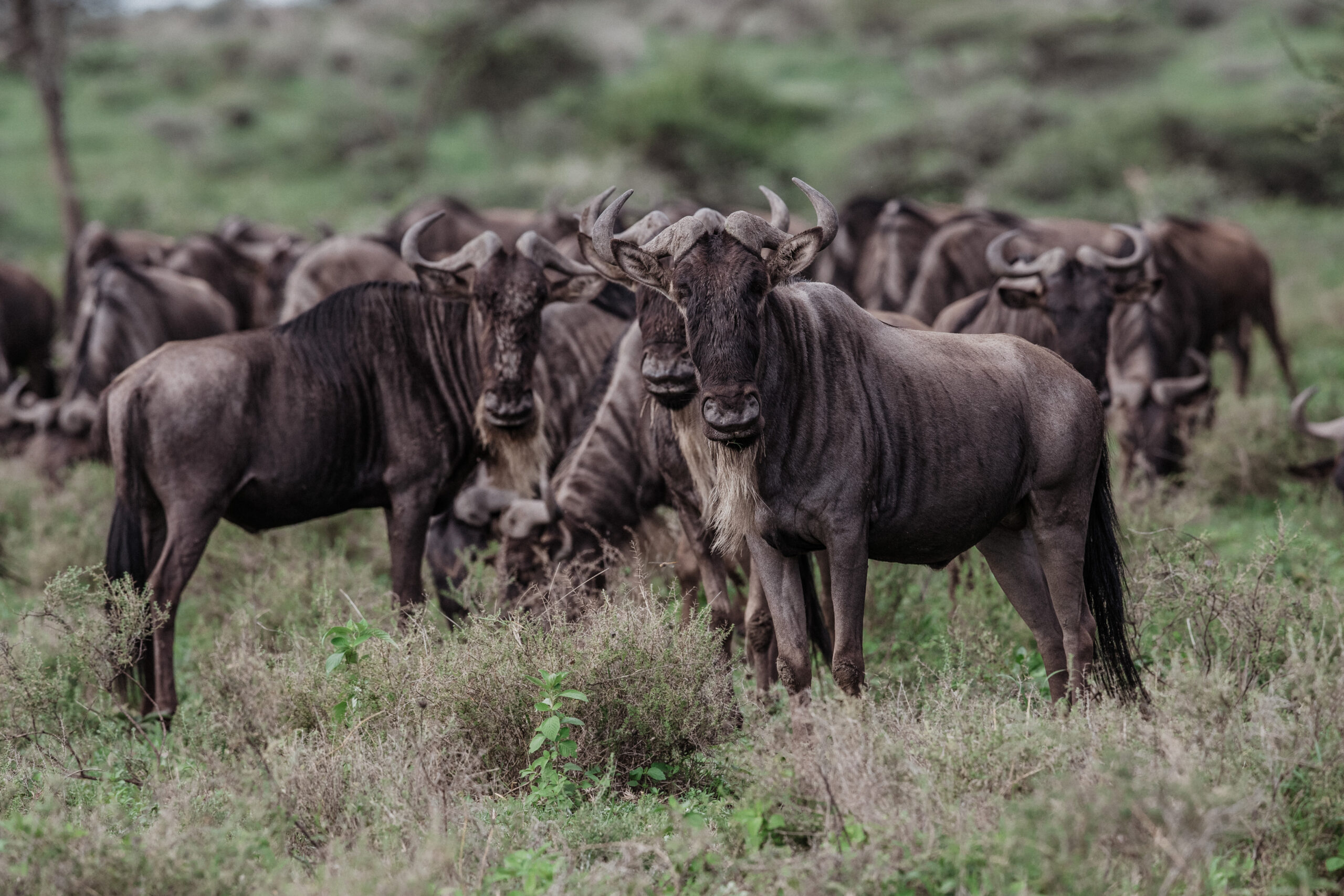Migrants without visas
Where is the migration at this time of year? Here’s what we’re seeing …
November is the month when the herds tend to head south, seeking grasslands watered by new rains. These ‘short rains’ usually happen between October and December – and have just begun (the long rains are March to May).
As a result, although we still have a few slow movers in the Masai Mara, the majority of the wildebeest are lumbering down through the Serengeti. Soon all the wildebeest will be in the Serengeti National Park, with the stragglers having crossed the Mara and Sand rivers. In other words, they will have moved out of Kenya (and the Masai Mara) into Tanzania (the Serengeti), though they will have absolutely no awareness of such borders.
Unencumbered by passports or visas, unaware of Covid and world affairs, their focus will be much more straightforward: stay clear of predators; eat and drink well; then – soon – set about creating the next generation.
There are still some fairly substantial herds of wildebeest and zebra in the northern Serengeti, creating great viewing from Serengeti Bushtops, whilst the largest herds are congregating along the Seronera River valley which retains water all year round.
Right now, the southern part of the reserve is still dry and dusty with no rain, but that is the eventual destination. This is where Roving Bushtops is ideally placed: we are ready for the heavens to open and the migration to arrive – and indeed small herds of zebra have already congregated, like an advance party, checking out water levels in the nearby Simiyu river.
By next month (December), we expect the open plains of the Southern Serengeti to be heaving with migratory herds, attracted by nutritious grasses and the chance to breed. Only then will they sniff the wind, turn around, and continue the vast and unending migratory cycle.





